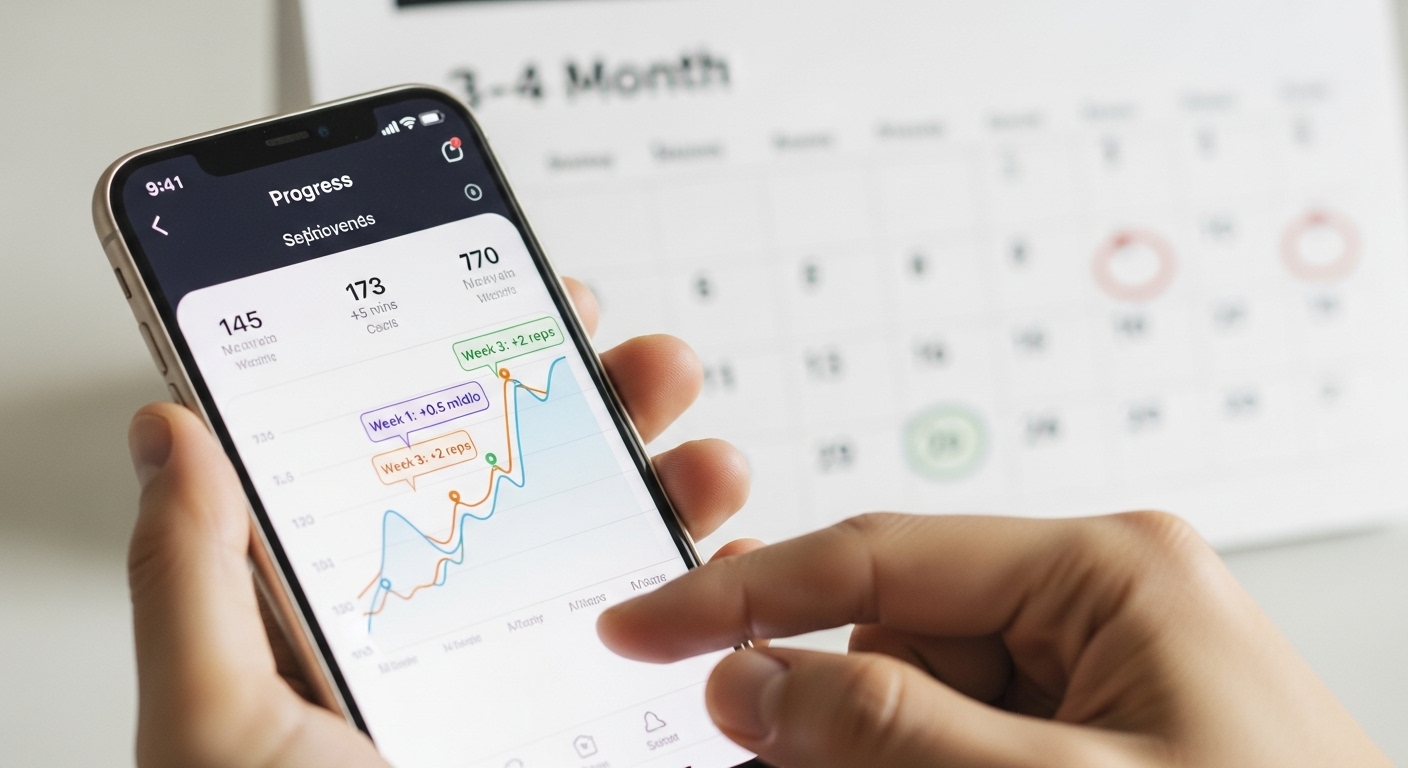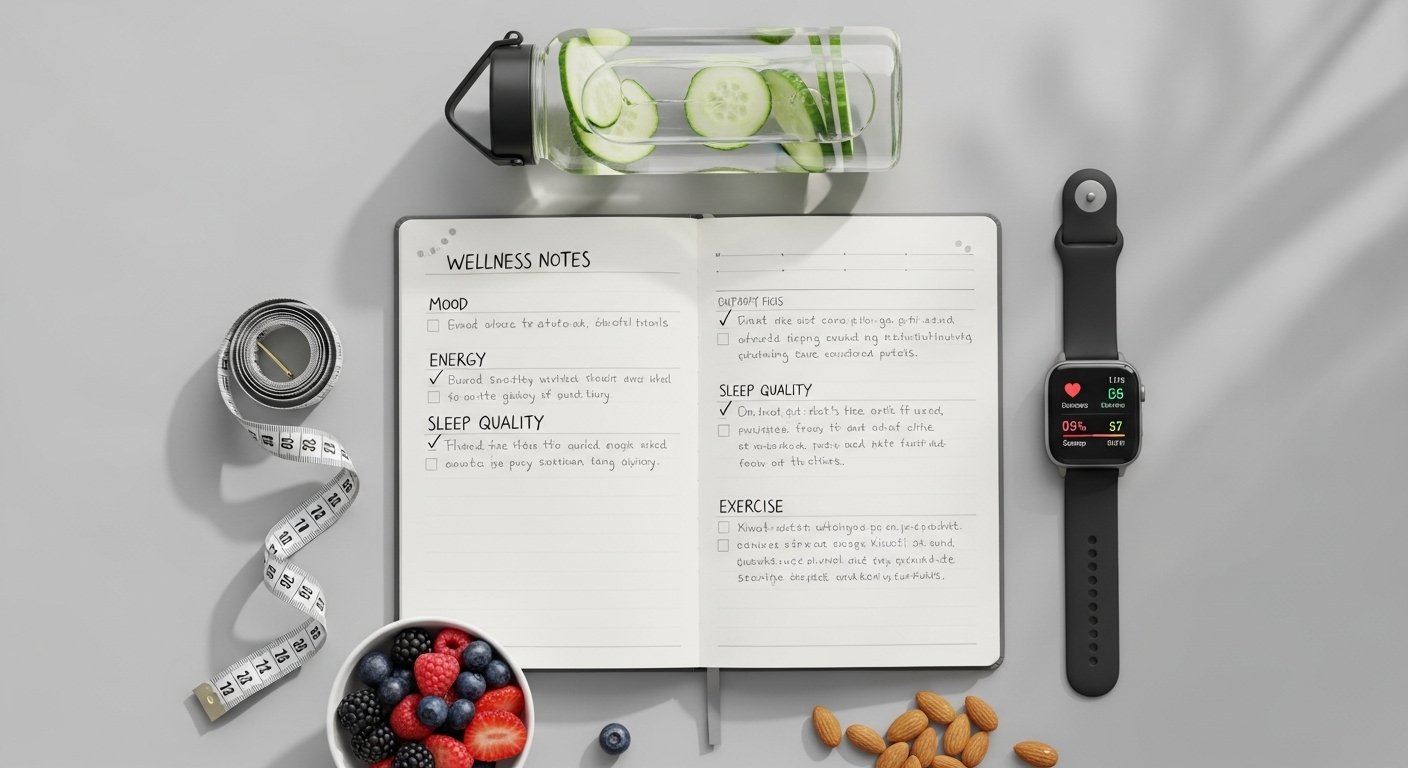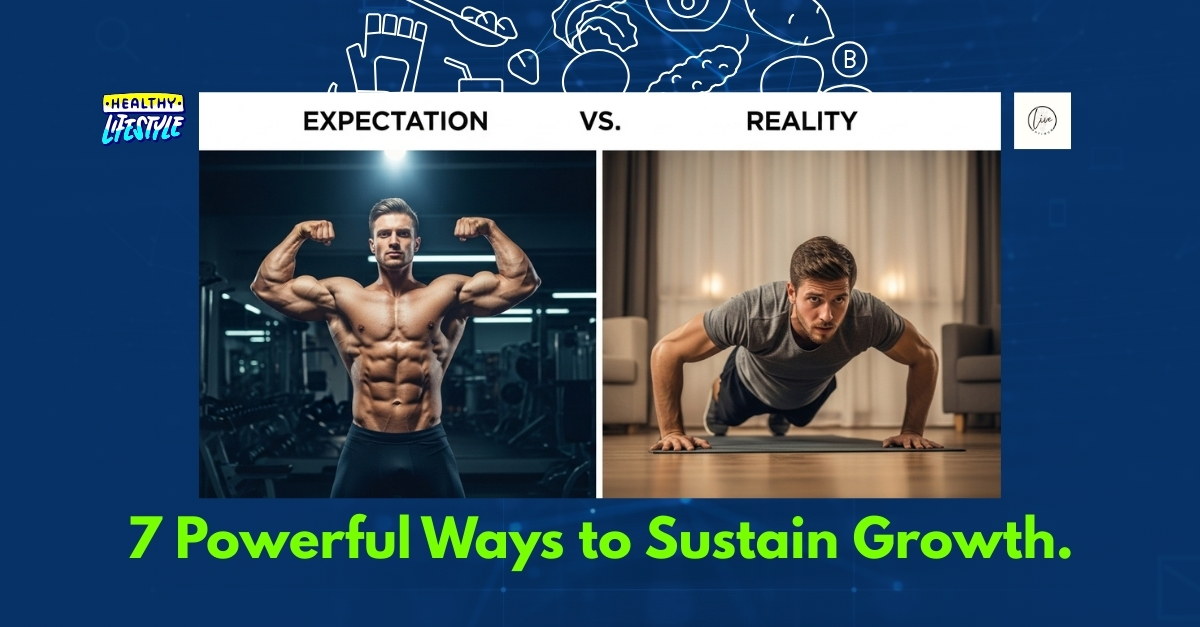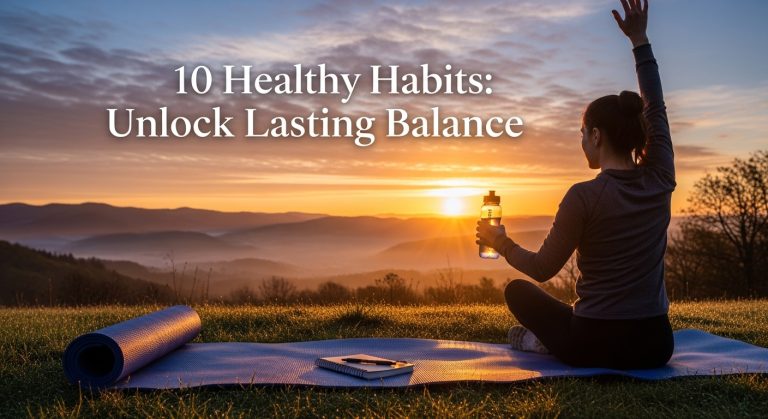Reality vs expectations can make or break your growth journey. Discover 7 powerful strategies to bridge the gap between what you expect and what actually happens in your physical and mental development.
Introduction
Here’s something that’ll probably hit close to home: 89% of people abandon their fitness goals within the first three months. Not because they lack motivation, but because reality vs expectations creates a massive psychological gap that feels impossible to bridge.
I learned this the hard way when I started my own transformation journey. Picture this, I’m standing in front of my bathroom mirror at 5:47 AM, expecting to see Captain America staring back after just two weeks of workouts. Reality? I looked exactly the same, maybe slightly more tired.
That moment taught me something profound about the reality vs expectations dynamic that governs not just our physical development, but our entire approach to growth. The truth about reality vs expectations isn’t that one is right and the other is wrong. It’s that most of us set expectations based on highlight reels while living in the raw, unfiltered reality of daily progress.
But here’s what I’ve discovered: when you learn to work with the tension between reality vs expectations instead of against it, something magical happens. You start growing in ways you never imagined possible.
Reality vs Expectations Way 1:
Reframe Your Timeline Expectations.
Let me tell you about the biggest lie the fitness industry tells us: “Get results in 30 days!” I fell for this nonsense hard when I started my journey. My expectations were completely out of whack with what reality actually delivers.
The truth? Real transformation takes months, sometimes years. But here’s the kicker once I accepted this reality vs expectations mismatch, everything changed. I stopped looking for overnight miracles and started celebrating tiny wins.
Instead of expecting massive changes in a month, I started tracking weekly improvements. Did I lift five more pounds this week? Did I sleep better after changing my evening routine? These micro victories became my new success metrics.
The reality vs expectations gap narrowed significantly when I started thinking in seasons, not weeks. Spring was for building the foundation. Summer for pushing intensity. Fall for refining what worked. Winter for recovery and planning.
I remember hitting my first real plateau around month three. My expectations were screaming for continued progress, but reality was teaching me about adaptation periods. The frustration was real, but that plateau taught me patience in ways no motivational quote ever could. When I finally broke through, I understood something profound: growth isn’t just about adding weight to the bar, it’s about learning to trust the process even when progress isn’t visible.
Real growth operates on nature’s timeline, not society’s instant gratification demands.
Here’s what I wish someone had told me: expect the process to be longer than you want but more rewarding than you imagine. When you align your timeline expectations with reality vs expectations dynamics, you stop rushing and start building sustainable momentum.

Reality vs Expectations Way 2:
Transform Setbacks Into Comeback Fuel.
Most people treat setbacks like evidence they’re not cut out for growth. I used to do this too, until I learned something powerful from watching how muscles actually develop.
Your muscles grow stronger by literally tearing and rebuilding. The setback that muscle tear is essential for the comeback increased strength. The reality vs expectations shift happened when I started viewing life setbacks the same way.
Got injured and couldn’t work out for two weeks? That became my chance to focus on nutrition and stress management. Had a terrible week with my meditation practice? Perfect opportunity to explore what triggers knocked me off course.
The reality vs expectations game changes completely when you expect setbacks rather than perfect execution. Suddenly, they’re not failures they’re data points teaching you about your patterns and weaknesses.
I was stuck in cycles of overwhelm, expecting myself to push through endless stress without breaking. Then I learned about deload weeks in training necessary periods where you reduce intensity to prevent injury. This taught me something profound about dealing with emotional fatigue. When life chaos disrupted my habits, instead of seeing it as failure, I started treating it like deload weeks. The frustration of broken streaks transformed into curiosity about what my system was trying to tell me.
Setbacks aren’t roadblocks; they’re redirects toward more sustainable growth strategies.
Here’s my setback protocol: First, I acknowledge what happened without judgment. Second, I identify what the setback is teaching me about my approach. Third, I adjust my strategy based on this new information. The reality vs expectations breakthrough comes when you realize setbacks are actually feedback, not failure.
Reality vs Expectations Way 3:
Master Energy Management Over Time Management.

Everyone talks about time management, but nobody mentions energy management. This was my biggest reality vs expectations disconnect for years. I kept expecting to maintain high energy all day, every day, regardless of how I was treating my body and mind.
Reality check: your energy operates in cycles, just like everything else in nature. Trying to maintain peak performance 24/7 is like expecting your heart to beat at maximum rate constantly. It’s not sustainable and it’ll eventually break you.
I learned this during a particularly brutal month when I was working 12 hour days and expecting to crush intense workouts afterward. My expectations said “mind over matter.” Reality said “you’re about to burn out completely.”
The shift came when I started tracking my natural energy patterns instead of fighting them. I discovered I had about 4-5 hours of peak mental energy per day, usually in the morning. My physical energy peaked in late afternoon.
Once I understood these patterns, I could work with them instead of against them. Heavy thinking tasks got scheduled for morning peak hours. Workouts moved to late afternoon when my body was naturally ready for physical challenges.
I was caught in emotional exhaustion, expecting weekend rest to fix weeks of mental strain. But I learned something from understanding muscle recovery: growth happens during rest periods, not just during the work. I started treating my emotional overwhelm like training intensity it needed recovery periods to avoid injury. The transformation was remarkable: instead of feeling emotionally depleted by Friday, I maintained steady energy throughout the week.
Energy management turns time from a limiting factor into a strategic resource.
The reality vs expectations gap around energy shrinks when you start expecting to manage it rather than just spend it. You begin planning recovery as intentionally as you plan work. You start honoring your natural rhythms instead of fighting them.
Reality vs Expectations Way 4:
Build Identity Based Habits.
Most people try to change their actions without changing their identity. They want to become fit while still seeing themselves as “not a gym person.” The reality vs expectations mismatch becomes inevitable because their self-concept and desired behaviors are completely misaligned.
I experienced this firsthand when I kept trying to force myself to meditate daily while internally believing I was “too restless” for mindfulness practices. My expectations said I should be able to sit still for 20 minutes. Reality kept delivering fidgety, distracted sessions that left me feeling like a failure.
The breakthrough came when I shifted from “I’m trying to meditate” to “I’m someone who prioritizes mental clarity.” That subtle identity shift changed everything. Suddenly, missing a formal meditation session didn’t mean I failed it meant I needed to find other ways to honor my commitment to mental clarity.
Identity based habits work because they align your expectations with who you’re becoming rather than fighting against who you think you are. When your actions match your evolving identity, the resistance drops dramatically.
Here’s how this played out in my physical development: Instead of saying “I need to work out,” I started saying “I’m someone who moves my body daily.” Some days that meant intense gym sessions. Other days it meant walking meetings or stretching while watching TV.
I struggled with consistency because deep down, I didn’t believe I was “the type of person” who could stick to healthy habits. This reminded me of muscle memory your body remembers movement patterns even after breaks because the neural pathways remain. I realized I needed to build neural pathways for my new identity. Every time I chose movement over sedentary options, I was reinforcing new patterns of “who I am.” The wins felt different when I wasn’t trying to force myself to act differently, but simply acting like myself.
Your identity shapes your actions more powerfully than your intentions ever will.
The reality vs expectations gap around habits disappears when you focus on becoming rather than doing. Each small action becomes evidence for your evolving identity rather than a task you have to complete.
Reality vs Expectations Way 5:
Develop Your Personal Progress Metrics.

The biggest reality vs expectations trap is measuring progress the way everyone else does instead of tracking what actually matters for your unique journey. I spent months obsessing over the scale while completely ignoring the fact that I was sleeping better, handling stress more effectively, and feeling stronger.
Conventional measures of progress Weight, repetitions, and time spent only provide a portion of the picture. They’re outcome measures, not process measures. And here’s the thing about reality vs expectations: outcomes are largely outside your direct control, but processes are entirely within it.
I revolutionized my growth tracking when I started measuring leading indicators instead of just lagging indicators. Instead of only tracking how much weight I lost, I started measuring how consistent I was with my nutrition choices. Instead of just counting meditation minutes, I tracked how quickly I recovered from stressful situations.
These process metrics gave me something to celebrate daily instead of waiting weeks for outcome changes. My expectations could align with reality vs expectations dynamics because I was measuring things I could actually influence through my daily actions.
I was drowning in self-doubt, measuring my worth by external achievements while ignoring my internal growth. This reminded me of strength training, you can’t always judge progress by how much weight you lift that day because recovery, sleep, stress, and nutrition all affect performance. I started tracking my emotional responses to setbacks instead of just the setbacks themselves. The shift was powerful: instead of viewing difficult days as failures, I began seeing them as data points about my resilience development.
What you measure becomes what you treasure in your growth journey.
The reality vs expectations gap shrinks dramatically when you’re measuring progress across multiple dimensions. Some days your physical metrics might plateau while your mental resilience is skyrocketing. Some weeks your productivity might dip while your stress management skills improve significantly.
Reality vs Expectations Way 6:
Create Flexible Consistency Over Rigid Perfection.
Most people build systems designed for perfect conditions, then wonder why they fall apart when life gets messy. The reality vs expectations mismatch comes from expecting controlled environments while living in chaotic reality.
A month when everything went wrong taught me the value of flexible constancy. My gym closed unexpectedly, I got sick twice, and work demands tripled. Instead of abandoning my health commitments, I adapted them. Gym workouts became living room bodyweight sessions.
The key insight: your non negotiables should be outcomes, not methods. My non negotiable was moving my body daily and spending time in intentional mindfulness. How that happened could vary wildly based on circumstances.
Flexible consistency works because it honors both your growth goals and the reality vs expectations tension of an unpredictable life. Your expectations become adaptive rather than rigid, which eliminates the all or nothing thinking that kills most people’s progress.
I used to crumble every time my routine got disrupted, missed workouts would spiral into missed weeks. Then I learned about muscle memory: even after breaks, your body remembers its previous strength levels and rebuilds faster. This taught me something profound about dealing with routine disruptions. When life chaos interrupted my habits, instead of seeing it as starting over, I started treating it like return to training periods. The frustration of broken streaks transformed into confidence about my ability to adapt and resume.
Flexible consistency bends without breaking, while rigid perfection shatters under pressure.
The reality vs expectations breakthrough happens when you expect variability rather than consistency, adaptation rather than execution.Rather than designing systems that need ideal conditions, you develop systems that adapt to your situation.
Reality vs Expectations Way 7:
Cultivate Growth Through Recovery Rhythms.

The biggest lie about growth is that it requires constant forward motion. Reality? Growth happens during recovery periods, not just during effort periods. This reality vs expectations mismatch keeps people stuck in unsustainable patterns that eventually burn them out.
I discovered this truth the hard way during a period when I was pushing myself relentlessly in every area of life. My expectations said more effort equals more results. Reality delivered exhaustion, decreased performance, and eventual breakdown.
The shift came when I started studying how elite athletes train. They don’t go all out every day. They follow periodized training cycles with built in recovery phases. Hard training phases are followed by easier recovery phases.
I applied this principle to every area of my growth. Intense work weeks are followed by lighter weeks. Physical training cycles include planned deload weeks where I reduce intensity to prevent injury and allow adaptation.
The reality vs expectations gap around recovery disappears when you expect it to be an essential part of growth rather than an obstacle to overcome. Recovery becomes strategic rather than something that happens when you’re forced to stop.
I was caught in cycles of burnout, expecting myself to maintain peak performance indefinitely. Then I learned about supercompensation in training you stress the system, then allow recovery, and come back stronger than before. This taught me that my emotional and mental systems work the same way. The breakthrough came when I started scheduling recovery the same way I scheduled effort. My connection with prolonged work was changed by the strategic relief of being allowed to take a break.
Recovery isn’t the absence of growth; it’s where growth gets integrated into who you become.
The reality vs expectations shift happens when you start expecting recovery to enhance your growth rather than interrupt it. You begin planning rest as strategically as you plan effort.
Conclusion
The reality vs expectations gap doesn’t have to be your enemy. When you understand how to work with this tension instead of against it, it becomes one of your most powerful growth tools.
These seven ways to sustain growth aren’t just strategies they’re a complete mindset shift about how sustainable development actually works. You move from fighting reality to dancing with it. You shift from rigid expectations to adaptive intelligence.
The beautiful thing about bridging the reality vs expectations gap is that it doesn’t just improve your results it makes the entire journey more enjoyable. When your expectations align with how growth actually works, you can celebrate progress that you previously would have dismissed as insufficient.
Remember, the goal isn’t to eliminate the gap between reality vs expectations. The goal is to make that gap smaller and more manageable while using the tension it creates as fuel for continuous improvement.
Your growth journey is unique. Your timeline is your own. Your methods should adapt to your circumstances. But the principles remain constant: respect reality, adjust expectations, stay consistent with your core commitments, and trust the process.
As you continue developing both your physical and mental strength, carry this understanding with you: sustainable growth isn’t about perfection it’s about progression. The next article in our series will dive deep into “The Science of Compound Consistency: How Small Actions Create Massive Transformations.”
What does “reality vs expectations” really mean in personal growth?
It’s the gap between what you hope to achieve and what actually happens in real life. Managing this gap is key because unrealistic expectations often lead to frustration, while embracing reality keeps you consistent.
Why do most people abandon their fitness or growth goals so quickly?
Most quit because they expect rapid results and get discouraged when progress is slower. The real problem isn’t lack of motivation it’s misaligned expectations.
How can I stop comparing my progress to unrealistic highlight reels online?
Focus on your own journey by tracking small personal wins instead of social media snapshots. Everyone’s progress looks different behind the scenes, even if it doesn’t appear that way online.
Is it normal to feel discouraged when results don’t match expectations?
Yes, it’s completely normal. What matters is learning to use that frustration as fuel for patience and persistence rather than a reason to give up.
How can understanding reality vs expectations make my growth journey easier?
When you expect progress to be gradual and uneven, you stop wasting energy fighting reality. Instead, you work with it, which makes the process less stressful and more sustainable.
Why is expecting fast results harmful to long-term progress?
It creates constant disappointment, which often leads to giving up. Slow, steady progress builds habits that last.
How do I set realistic timelines for fitness and mindset growth?
Think in terms of months or seasons, not days or weeks. This shift keeps you patient while progress compounds over time.
What are some small wins I can track instead of only big milestones?
Celebrate lifting a few extra pounds, sleeping better, or staying consistent for a week. These micro-wins add up to big changes.
How do plateaus teach patience in personal growth?
Plateaus show you that growth isn’t linear it requires adaptation. Breaking through them builds resilience and trust in the process.
Why is thinking in “seasons” more effective than weekly goals?
It helps you align with natural rhythms build, push, refine, then recover. This cycle makes your journey sustainable instead of stressful.
How can I view setbacks as part of growth instead of failures?
See them as feedback, not proof you’re failing. Each setback teaches you where your system needs adjusting.
What can I do when an injury or life event derails my progress?
Shift focus to what you can control, like nutrition, recovery, or mental skills. Progress never stops, it just changes form.
How do setbacks provide useful feedback about my habits?
They reveal weak spots in your system. Instead of quitting, you learn what needs refining for future progress.
What is a “deload week” and how can it apply outside the gym?
It’s a planned period of reduced effort to recover and grow stronger. In life, it means stepping back from stress so you can return sharper.
How can I turn frustration from broken streaks into learning opportunities?
Treat them as data points showing what disrupted your routine. Use that insight to build a more flexible, resilient system.
Why is energy management more important than time management?
You can have 12 free hours but still get nothing done if your energy is low. Energy, not time, drives results.
How do I identify my natural energy peaks and lows?
Track when you feel mentally sharp or physically strong during the day. Then schedule key tasks around those windows.
How should I schedule workouts and mental tasks around energy cycles?
Do heavy mental work during peak brain hours and workouts when your body feels naturally energized. Matching tasks to energy improves performance.
How can I avoid emotional burnout while still being productive?
Build in recovery just like you do with workouts rest periods aren’t laziness, they’re essential for growth.
What recovery practices help sustain energy long-term?
Prioritize sleep, nutrition, hydration, and stress relief practices like meditation or walks. These recharge your system for consistent energy.
Why do identity-based habits last longer than action-based habits?
Because you’re not just “doing something,” you’re becoming someone. Identity shifts make habits part of who you are, not tasks on a checklist.
How do I shift from “trying to change” to “becoming the type of person”?
Reframe your self talk from “I’m trying” to “I am someone who…” This rewires your brain to align with your desired identity.
What are examples of identity-based fitness habits?
Instead of “I need to work out,” say “I’m someone who moves daily.” This keeps you flexible while reinforcing consistency.
How can I build a new identity when my old patterns feel ingrained?
Start small with daily actions that prove your new identity to yourself. Each choice is evidence of who you’re becoming.
Why does acting like the person I want to become reduce resistance?
Because you’re not fighting old habits you’re embodying a new self. The brain prefers consistency between identity and actions.
Why shouldn’t I only measure progress by weight or reps?
Those numbers don’t show the full picture. Stress, sleep, and emotional resilience are equally important signs of growth.
What are process metrics vs outcome metrics in personal growth?
Process metrics measure daily actions you control (e.g., consistency). Outcome metrics are results that come later (e.g., weight loss).
How can I track mental and emotional progress effectively?
Notice how quickly you recover from stress, how focused you feel, or how consistent your routines are. These are real progress markers.
What leading indicators matter more than traditional results?
Consistency, sleep quality, stress management, and energy levels are leading signs that outcomes will follow.
Why does measuring multiple dimensions of progress prevent discouragement?
Because when one metric stalls, others are still improving. This keeps you motivated by showing that growth is happening in different forms.



